| [1]Pawelec KM,Confalonieri D,Ehlicke F,et al.Osteogenesis and mineralization of mesenchymal stem cells in collagen type Ⅰ-based recombinant peptide scaffolds.J Biomed Mater Res Part A.2017;105(7):1856-1866.[2]Kuttappan S,Mathew D,Nair MB,et al.Biomimetic composite scaffolds containing bioceramics and collagen/gelatin for bone tissue engineering-A mini review.Int J Biol Macromol.2016;93 (Pt B):1390-1401.[3]Dong GC,Chen HM,Yao CH.A novel bone substitute composite composed of tricalcium phosphate, gelatin and drynaria fortunei herbal extract.J Biomed Mater Res A.2008;84(1):167-177.[4]Hu Q,Li B,Wang M,et al.Preparation and characterization of biodegradable chitosan/hydroxyapatite nanocomposite rods via in situ hybridization: a potential material as internal fixation of bone fracture.Biomaterials.2004;25(5):79-785.[5]Greco KV,Francis L,Huang H,et al.Is quercetin an alternative natural crosslinking agent to genipin for long term dermal scaffolds implantation ? J Tissue Eng Regen Med.2016. doi:10.1002/term.2338.[Epub ahead of print][6]Zhang Y,Wang QS,Yan K,et al.Preparation, characterization, and evaluation of genipin crosslinked chitosan/gelatin three-dimensional scaffolds for liver tissue engineering applications.J Biomed Mater Res Part A.2016;104(8):1863-1870.[7]Tseng HJ,Tsou TL,Wang HJ,et al.Characterization of chitosan-gelatin scaffolds for dermal tissue engineering.J Tissue Eng Regen Med.2013;7(1):20-31.[8]Peng YY,Glattauer V,Ramshaw J.Stabilisation of collagen sponges by glutaraldehyde vapour crosslinking.Int J Biomater. 2017;2017:8947823.[9]Suesca E,Dias A,Braga M,et al.Multifactor analysis on the effect of collagen concentration, cross-linking and fiber/pore orientation on chemical,microstructural, mechanical and biological properties of collagen typeⅠ scaffolds.Mater Sci Eng C Mater Biol Appl. 2017;77:333-341.[10]Madhavan K,Belchenko D,Motta A,et al.Evaluation of composition and crosslinking effects on collagen-based composite constructs. Acta Biomater.2010;6(4):1413-1422.[11]Yao CH,Liu BS,Hsu SH,et al.Calvarial bone response to a tricalcium phosphate-genipin crosslinked gelatin composite. Biomaterials.2005;26(16):3065-3074.[12]金勋杰,闫景龙,周磊,等.京尼平交联明胶特性随时间变化的研究[J].生物医学工程学杂志,2008,25(1):150-153.[13]Liu HC,Yao CH,Sun JS,et al.Osteogenic evaluation of glutaraldehyde crosslinked gelatin composite with fetal rat calvarial culture model.Artif Organs.2001;25(8):644-654.[14]Takahashi Y,Yamamoto M,Tabata Y.Enhanced osteoinduction by controlled release of bonemorphogenetic protein-2 from biodegradable sponge composed of gelatin and β-tricalcium phosphate.Biomaterials.2005;26(17):4856-4865.[15]Mi FL,Tan YC,Liang HF,et al.In vivo biocompatibility and degradability of a novel injectable-chitosan-based implant. Biomaterials.2002;23(1):181-191.[16]Liu BS,Yao CH,Chen YS,et al.In vitro evaluation of degradation and cytotoxicity of a novel composite as a bone substitute.J Biomed Mater Res A.2003;67(4):1163-1169.[17]李静,张富强,靳喜海.纳米羟基磷灰石-氧化锆复合陶瓷体外细胞毒性研究[J].北京口腔医学,2004,12(4):191-194. [18]孔晓霞,王鸾鸾,侯丽.不同振荡条件下制备的某种含银敷料的细胞毒性试验[J].生物医学工程研究, 2014,33(3):189-192.[19]Mohseni M,Jahandideh A,Abedi G,et al.Assessment of tricalcium phosphate/collagen (TCP/collagene)nanocomposite scaffold compared with hydroxyapatite (HA) on healing of segmental femur bone defect in rabbits.Artif Cells Nanomed Biotechnol. 2017;14:1-8.[20]Pawelec KM,Confalonieri D,Ehlicke F,et al.Osteogenesis and mineralization of mesenchymal stem cells in collagen typeⅠ-based recombinant peptide scaffolds.J Biomed Mater Res Part A. 2017;105(7):1856-1866.[21]潘朝晖,薛山,赵玉祥,等.多孔生物陶瓷人工骨修复儿童良性骨肿瘤刮除术后骨缺损[J].生物骨科材料与临床研究, 2017,14(3):24-27. [22]刘家祺.Beta-磷酸三钙复合材料支架的研究进展[J].中国美容医学, 2011,20(4):688-691. [23]Nayak S,Talukdar S,Kundu S.Potential of 2D crosslinked sericin membranes with improved biostability for skin tissue engineering. Cell Tissue Res.2012;347(3):783-794.[24]叶漫文,方炜,石勇,等.京尼平交联丝素蛋白-壳聚糖缓释微球的制备与表征[J].口腔疾病防治,2016,24(2):79-87.[25]Sung HW,Chang Y,Liang IL,et a1.Fixation of biological tissues with a naturally occurring crossing agent: fixation rate and effects of PH, temperature, and initial fixative concentration.J Biomed Mater Res.2000;52(1):77-87.[26]Khan MN,Islam JM,Khan MA.Fabrication and characterization of gelatin-based biocompatible porous composite scaffold for bone tissue engineerin.J Biomed Mater Res A.2012;100(11):3020-3028.[27]Yao CH,Liu BS,Hsu SH,et al.Biocompatibility and biodegradation of a bone composite containing tricalcium phosphate and genipin crosslinked gelatin.J Biomed Mater Res.2004;69(4):709-717.[28]Vatankhah E,Prabhakaran MP,Jin G,et al.Development of nanofibrous cellulose acetate/gelatin skin substitutes for variety wound treatment applications.J Biomater Appl.2014;28(6):909-921.[29]Charulatha V,Rajaram A.Influence of different crosslinking treatments on the physical properties of collagen membranes. Biomaterials.2003;24(5):759-767.[30]Cavalcanti SC,Pereira CL,Mazzonetto R,et al.Histological and histomorphometric analyses of calcium phosphate cement in rabbit calvaria.J Craniomaxillofac Surg.2008;36(6):354-359. |
.jpg)
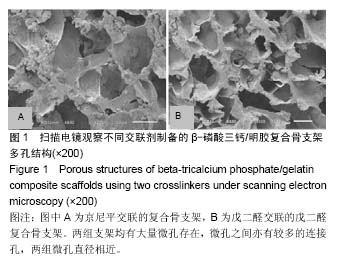
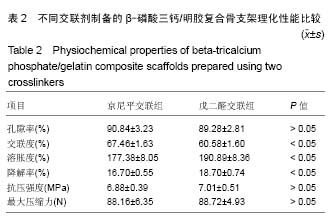
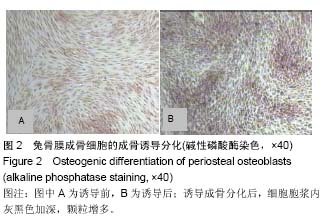
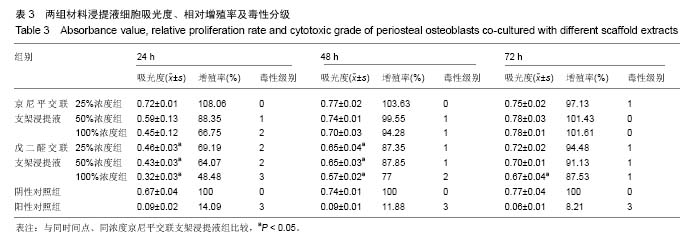
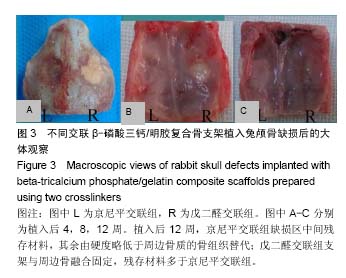
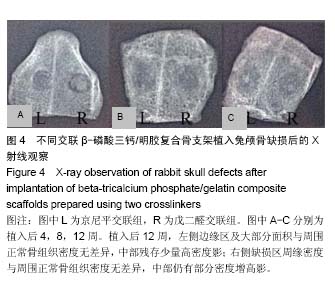
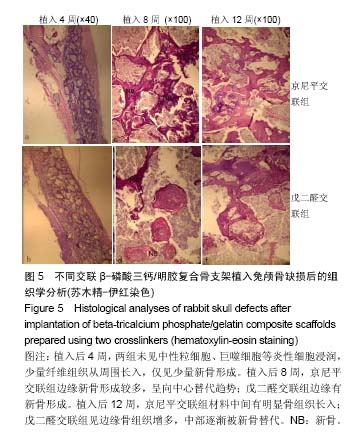
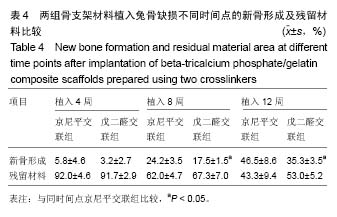
.jpg)
.jpg)